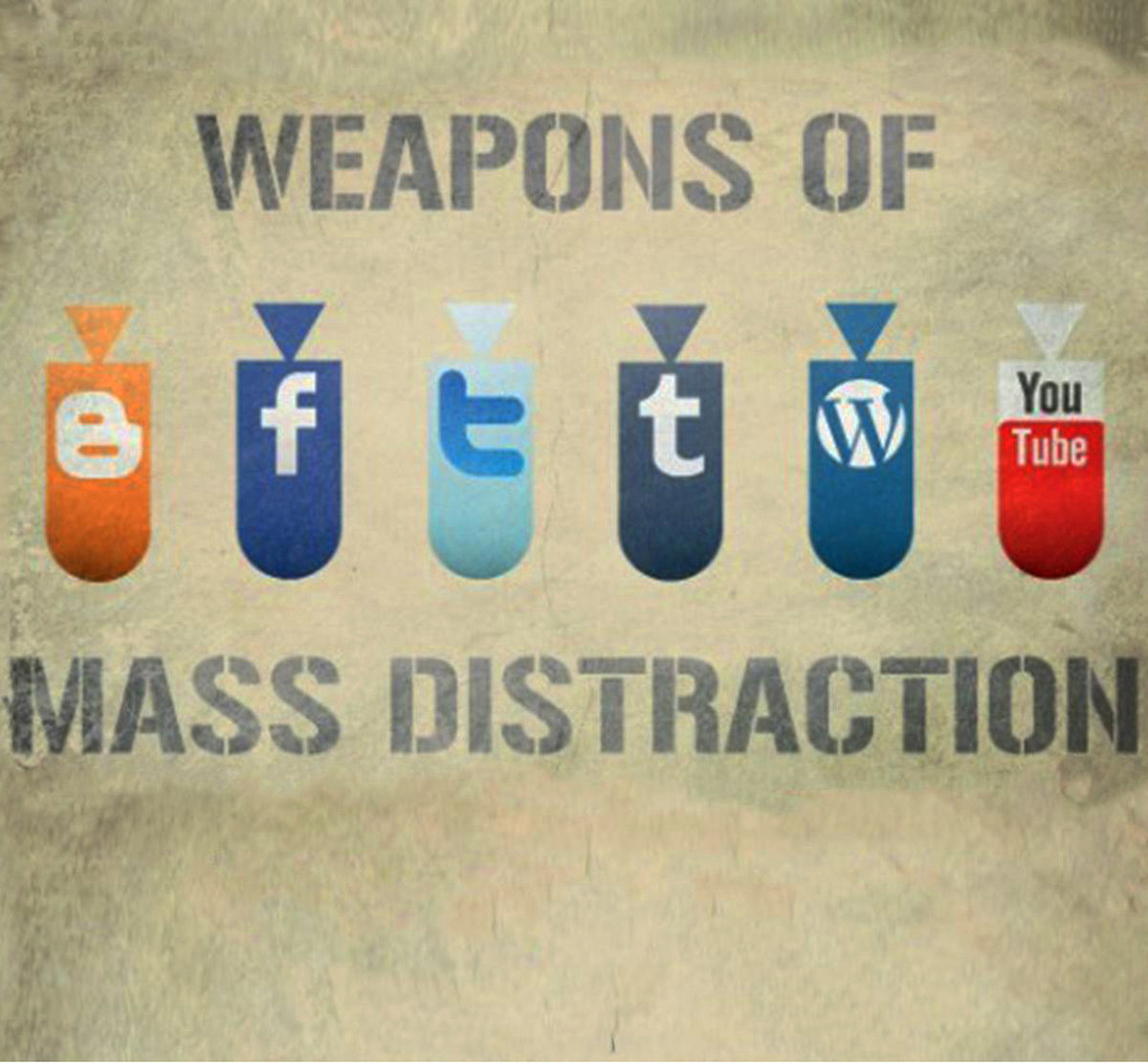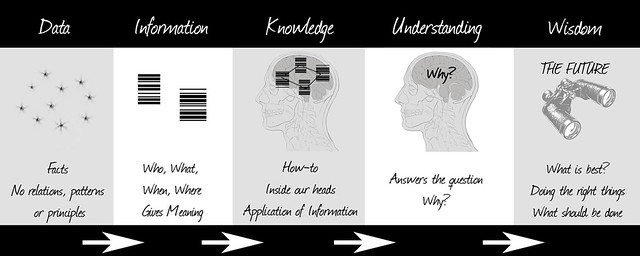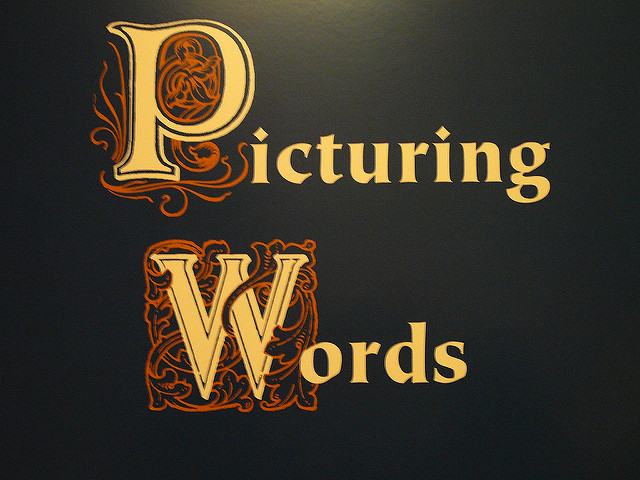|
|
|
Monday, October 28th, 2019

Poking through 13+ years of posts I find information that’s as useful now as when it was written.
Golden Oldies is a collection of the most relevant and timeless posts during that time.
Since this was written in 2012 things have gotten much worse, with deep fakes, audio and video, fake news and misinformation in general added to everything described in the post. Caveat emptor (let the buyer beware) is more true now and more important than ever before.
Read other Golden Oldies here.
Do you look for peer reviews, such as those on Yelp, Amazon and most consumer sites, before buying the product, visiting the restaurant or booking the hotel?
Before the Internet we asked our friends and checked critics’ comments in newspapers and magazines, in order to increase the odds for a favorable experience.
These days we check the Internet.
“The wheels of online commerce run on positive reviews,” said Bing Liu, a data-mining expert at the University of Illinois, Chicago (…) Mr. Liu estimates that about one-third of all consumer reviews on the Internet are fake.
Consumer reviews are powerful because, unlike old-style advertising and marketing, they offer the illusion of truth. They purport to be testimonials of real people, even though some are bought and sold just like everything else on the commercial Internet.
Do rankings based on the number of followers people have influence your trust level or opinion of them? But how do you know they are real?
And it’s not just ego-driven blogger types. Celebrities, politicians, start-ups, aspiring rock stars, reality show hopefuls — anyone who might benefit from having a larger social media footprint — are known to have bought large blocks of Twitter followers.
Are you impressed when someone’s Facebook wall is filled with beautiful people?
They are for sale, too.
His idea, he said, was “to turn cyberlosers into social-networking magnets” by providing fictitious postings from attractive people. The postings are written by the client or by Mr. Walker and his employees, who base the messages on the client’s requests.
If having to choose between being a chump and a cynic isn’t up your alley, perhaps the best advice when it comes to reviews, followers and friends is ‘buyer beware’ and ‘if it seems to good to be true it probably is’.
Flickr image credit: Psychology Today
Posted in Communication, Golden Oldies, Personal Growth | No Comments »
Wednesday, June 26th, 2019

Every day seems to bring more bad news from the AI front.
Google gives away tools for DIY AI, with no consideration for who uses them or for what.
One result is the proliferation of deepfakes.
Now scientists from Stanford University, the Max Planck Institute for Informatics, Princeton University, and Adobe Research are making faking it even simpler.
In the latest example of deepfake technology, researchers have shown off new software that uses machine learning to let users edit the text transcript of a video to add, delete, or change the words coming right out of somebody’s mouth.
The result is that almost anyone can make anyone say anything.
Just type in the new script.
Adobe, of course, plans to consumerize the tech, with a focus on how to generate the best revenue stream from it.
It’s not their problem how it will be used or by whom.
Yet another genii out of the box and out of control.
You can’t believe what you read; you can’t believe what you read or hear; it’s been ages since you could believe pictures, and now you won’t be able to believe videos you see.
All thanks to totally amoral tech.
Werner Vogels, Amazon’s chief technology officer, spelled out tech’s attitude in no uncertain terms.
It’s in society’s direction to actually decide which technology is applicable under which conditions.
“It’s a societal discourse and decision – and policy-making – that needs to happen to decide where you can apply technologies.”
Decisions and policies that happen long after the tech is deployed — if at all.
Welcome to the future.
Image credit: Marion Paul Baylado
Posted in Culture, Ethics, Innovation | No Comments »
Tuesday, April 30th, 2019

The above image was yesterday’s Oldie from 2009.
What’s changed (or was off in the first place) since then?
Let’s take them one-by-one.
Data: data, since “facts” are often historical and the historical info is often biased.
Information: Think bias and fake news, neither is new, but the quantity has exploded.
Knowledge: Same as original.
Understanding: Too often why or any questioning is asked only if the facts and information run counter to our beliefs, opinion, and worldview.
Wisdom: Unlikely.
Wikipedia describes wisdom as follows:
Wisdom, sapience, or sagacity is the ability to think and act using knowledge, experience, understanding, common sense and insight.[1] Wisdom is associated with attributes such as unbiased judgment, compassion, experiential self-knowledge, self-transcendence and non-attachment,[2] and virtues such as ethics and benevolence.[3][4]
Much of the ability to think according to the above description has been either voluntarily turned over to, or co-opted by, social media.
Considered actions often must pass an “Instagram/Twitter filter;” those that don’t aren’t acted upon.
If there is anything social media can not be blamed for it’s a proliferation of wisdom.
Join me tomorrow for a look at ways and means to acquire wisdom.
Image credit: Nick J Webb
Posted in Ducks In A Row, Personal Growth | No Comments »
Monday, October 29th, 2018

Poking through 11+ years of posts I find information that’s as useful now as when it was written.
Golden Oldies is a collection of the most relevant and timeless posts during that time.
Experts, Congress, pundits, media and plain people are (more or less) up in arms about the quantity, prevalence and effect of fake news. The upshot for many is the realization that the companies behind the apps can’t be trusted. In reality, they never could be, whether from carelessness, sloppy work or just not giving a damn — the “move fast and break things” attitude made popular by Facebook, and, to be fair, public apathy.
And although trust levels are at an all time low, join me Wednesday for a look at how they are still being handed the keys to the kingdom.
Read other Golden Oldies here.
When I was in college, I remember discussing a newspaper story with my aunts. I remember saying that I didn’t believe something and my aunts saying that if something wasn’t true it would not be in the paper.
They really believed that, because in the world they grew up and lived in it was mostly was true.
Fast forward to today and you find the same attitude being applied to the information supplied by the tech they use.
They don’t question the stuff supplied by various apps, especially if it’s from known vendors.
Vendors such as MaxMind.
Maxmind identifies IP addresses, matches them to a map and sells that data to advertisers.
Trouble is, accuracy isn’t their strong point.
Back in 2002, when it started in this business, Fusion reports, MaxMind made a decision. If its tech couldn’t tell where, exactly, in the US, an IP address was located, it would instead return a default set of coordinates very near the geographic center of the country — coordinates that happen to coincide with Taylor’s front yard.
Taylor is the unfortunate owner of a farm that sits on one of those catch-all co-ordinates.
And although the info isn’t supposed to be used to identify specific addresses, surprise, surprise, that’s exactly how people do use it, law enforcement included.
The farm’s 82-year-old owner, Joyce Taylor, and her tenants have been subject to FBI visits, IRS collectors, ambulances, threats, and the release of private information online, she told Fusion.
As bad as that is, at least the Taylor’s still have their home, unlike the two families who are homeless because a contractor assumed Google maps was correct, so he didn’t check the demolition addresses.
Unbelievable.
Unbelievable that they accepted the tech without checking.
Unbelievable that they first called it a minor mistake.
Unbelievable that the owners aren’t suing.
Image credit: Terry Johnston
Posted in Golden Oldies | No Comments »
Tuesday, February 13th, 2018
 Fake news. People everywhere in the US and in all walks of life are talking about it. Fake news. People everywhere in the US and in all walks of life are talking about it.
There’s no question that fake news is subversive, whether created by humans or driven by AI.
But what about unfake fake news as served up by mainstream and new media alike?
Think you’ve never seen it?
Sure you have.
Frequently in financial reporting.
From CNBC: Twitter rockets more than 20 percent after the company reports first-ever net profit.
From BI: Snap crushed Wall Street’s revenue targets in its fourth quarter, as it filled its Snapchat app with more ads than ever and tapped into a broader group of consumers.
From US News: Tesla Finally Gives Investors Good Earnings News.
Wow! Based on the above headlines they look like great bets to contribute to your retirement.
Maybe.
But before investing your hard-earned dollars you might want to see what the same information looks like sans spin, hype and OMG.
Consider the information, often buried in euphoric media hyperbole, kind of like the fine print in a warranty or lease.
From Recode: Achieving profitability was one of the company’s [Twitter] main goals in 2017, and one of the big reasons it laid off 9 percent of its workforce in late 2016, and then sold off its developer business and shut down its video app Vine. Investors like profitable companies, and so do potential acquirers.
From TechCrunch: Snapchat’s big redesign will reach all users during Q1 2018, up from 40 million users currently. It was due to be fully rolled out by now but that has been delayed following poor reception in countries like the U.K., Australia and Canada. Amongst some of the first users to review the update, 83 percent of App Store reviews were negative, citing a confusing interface, ads mixed into the message inbox via Stories and people who don’t follow you back getting pushed into the Discover section.
From the New York times: The company [Tesla] lost $1.96 billion for the full year of 2017, nearly three times its loss of $675 million in 2016. The company has never made a full-year profit since it went public in 2010.
So what would unfake/unspun headlines look like?
KG sent along some hilariously accurate examples.
Caveat emptor, indeed.
Image credit: Kate Mereand-Sinha
Posted in Communication | No Comments »
Monday, February 12th, 2018

Poking through 11+ years of posts I find information that’s as useful now as when it was written.
Golden Oldies is a collection of the most relevant and timeless posts during that time.
Words have enormous power. In the past, dozens of companies stuck their foot in their corporate mouth by translating slogans, with no consideration of their meaning in the new language.
Today they face a much more serious challenge. AI’s ability to mimic voices and manipulate images means executives, as well as politicians, celebrities, religious leaders, and ordinary people, can be made to say anything, with images to match.
Caveat emptor has taken on a whole new meaning, not to mention urgency.
Read other Golden Oldies here.
Do words really make a difference? Can just one word change people’s perception of a person or event?
I’ve read several items lately on the importance of influence in leadership. Several even make the point that it’s the ability to influence that marks a person as a leader.
Personally, other than socially acceptable definitions, I don’t see a lot of difference between influence and manipulation.
Both influence and manipulation seek to produce an effect without any apparent exertion of force or direct exercise of command.
But if you say someone has a lot of influence it’s a compliment; call the same person a master manipulator and you’d better duck.
It’s a good example of the real power that words have to inspire or crush even if their meaning is the same.
And it’s important to remember that words come with baggage that goes well beyond their actual definition.
That baggage was one of the main reasons corporate marketing departments made so many mistakes when moving from one culture to another.
Braniff translated its slogan relating to seat upholstery, “Fly in leather” to Spanish; only it came out as “Fly naked.”
Coors slogan, “Turn it loose,” means “Suffer from diarrhea” in Spanish.
Clairol, introduced a curling iron called the “Mist Stick” in Germany and learned the hard way that mist is slang for manure.
Gerber started selling baby food in Africa using US packaging with the baby on the label until they found out that in Africa the picture on the label indicates what’s inside since most people can’t read.
There are hundreds of similar mishaps. They made marketing departments a laughing stock, forced companies to hire locally, helped change the headquarters mindset and encourage global companies to be truly global.
The point of all this is to encourage you to take a few extra minutes to think through not only what you want to say, but also what your audience will hear when you say it.
That effort can make the difference between going up like a rocket or down like a falling star.
Image credit: flickr
Posted in Communication, Golden Oldies | No Comments »
Wednesday, November 15th, 2017
Our apologies for missed and late postings. We were still having technical issues, but they’ve all been handled. (I hope!)
 I’m ambivalent about AI. I’m ambivalent about AI.
On one hand, some of the things it can do, such as enable an iPhone to do an ultrasound scan, are amazing and encouraging.
Earlier this year, vascular surgeon John Martin was testing a pocket-sized ultrasound device developed by Butterfly Network, (…) he knew that the dark, three-centimeter mass he saw did not belong there. “I was enough of a doctor to know I was in trouble,” he says. It was squamous-cell cancer.
On the other hand, AI is full of human bias, whether intentional or not.
AI tends to be fairly unflattering to anyone with a darker skin tone, and that using AI to judge female beauty is a pretty questionable goal. (…) MakeApp’s unflattering, malfunctioning AI is the latest in a long line of AI controversies: Snapchat’s offensive Bob Marley filter, FaceApp’s “black” filters, and smartphone cameras that lighten your skin by default.
There was a time when the phrase “seeing is believing” was tightly connected to reality.
That connection became shaky with the advent of Photoshop and has been rapidly deteriorating ever since.
Enter AI in the form of the generative adversarial networks (GAN).
But images and sound recordings retain for many an inherent trustworthiness. GANs are part of a technological wave that threatens this credibility.
GANs are poised to escalate fake news, discredit evidence, legal, medical, etc., and force you to question everything — or believe blindly.
Image credit: brett jordan
Posted in Communication, Culture, Innovation | 1 Comment »
Wednesday, June 28th, 2017
Fake news is on everybody’s mind these days.
Where does it come from?
How does it start?
Is it intentional? An accident? Honest error based on erroneous assumption?
A few days after Donald Trump was elected, 35-year-old Eric Tucker saw something suspicious: A cavalcade of large white buses stretched down main street near downtown Austin, Texas.
Tucker snapped a few photos and took to Twitter, posting the following message:

Tucker was wrong — a company called Tableau Software was actually holding a 13,000-person conference that day and had hired the buses.
OK, a wrong assumption by a social guy who had to tell his network.
But why didn’t the actual facts refute it when they were tweeted?
A new study published June 26 in the journal Nature looks into why fake posts like Tucker’s can go so viral.
Economists concluded that it comes down to two factors. First, each of us has limited attention. Second, at any given moment, we have access to a lot of information — arguably more than at any previous time in history. Together, that creates a scenario in which facts compete with falsehoods for finite mental space. Often, falsehoods win out.
Also, people consider the source of information more than the info itself. Trusted source = valid info.
The tweet was shared 350,000 times on Facebook and 16,000 and Trump added his two cents.
The corrected information was shared only 29 times.
Why didn’t Tucker tweet his network a correction when he it turned out to be false?
“I’m … a very busy businessman and I don’t have time to fact-check everything that I put out there, especially when I don’t think it’s going out there for wide consumption,”
In other words, he couldn’t be bothered.
Research and economists aside, Tucker provided the real key.
People aren’t bothered whether it’s true or not.
They just care that they get their 15 seconds of fame.
Image credit: Business Insider
Posted in Communication, Personal Growth | No Comments »
|
 Subscribe to
Subscribe to
MAPping Company Success
About Miki 
Clarify your exec summary, website, etc.
Have a quick question or just want to chat? Feel free to write or call me at 360.335.8054
The 12 Ingredients of a Fillable Req
CheatSheet for InterviewERS
CheatSheet for InterviewEEs™
Give your mind a rest. Here are 4 quick ways to get rid of kinks, break a logjam or juice your creativity!
Creative mousing
Bubblewrap!
Animal innovation
Brain teaser
The latest disaster is here at home; donate to the East Coast recovery efforts now!
Text REDCROSS to 90999 to make a $10 donation or call 00.733.2767. $10 really really does make a difference and you'll never miss it.
And always donate what you can whenever you can
The following accept cash and in-kind donations: Doctors Without Borders, UNICEF, Red Cross, World Food Program, Save the Children
*/
?>About Miki
About KG
Clarify your exec summary, website, marketing collateral, etc.
Have a question or just want to chat @ no cost? Feel free to write
Download useful assistance now.
Entrepreneurs face difficulties that are hard for most people to imagine, let alone understand. You can find anonymous help and connections that do understand at 7 cups of tea.
Crises never end.
$10 really does make a difference and you’ll never miss it,
while $10 a month has exponential power.
Always donate what you can whenever you can.
The following accept cash and in-kind donations:
|













